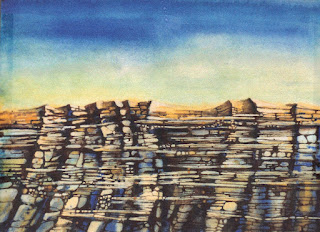Art in all its contortions--dance, poetry, painting, music, sculpture, novels--is all about sharing something. They are created for an audience. Whether they ever find that audience is an entirely different matter. However, the work must always be created with that thought in mind. And so the creator must deliver their message with utmost clarity.
Over the years, many incidents in my life have taught me about what I call the Zen Approach to art. The first one happened while I was in college. I was in a drawing class, working hard on a still life that the professor had set up. While we were all at work, the professor was chatting with someone just behind me. He came over and tore a scrap of paper off the bottom of my drawing to write a phone number. I was horrified. I was still in the precious state of mind that any drawing could be a masterpiece. So to me, my charcoal sketch on cheap paper had been violated. The professor, seeing my shock, said, "If you did it once, you can do it again."
I had no idea what he meant by that. Every time I started work on a piece of art, it was new. I was young. I didn't understand that drawing was a skill that must be developed through repetition. If I couldn't render something well, like faces, I avoided putting people in my paintings. It didn't occur to me that I could improve my skill by practice, and that much of the practice work would not be worthy of an audience.
The next big lesson came when I was working as a scenic artist. That is collaborative work. In many cases you are creating something designed by another, unless you are also the designer. Scenery can change or be cut at a moment's notice, but it always has to meet a high level of quality. Watching your hard work go into the trash is a stark lesson.
I once worked on a set for a pilot for a new TV show. It was a rush job, people working round the clock. The carpenters built an entire house and barn. The painters not only painted, but aged, decorated and weathered the new construction. Everything had to look old and worn. I worked in the barn, banging away at the beams to make them look distressed, and brushed thick paste over woodwork so they appeared to have multiple layers of paint. We were almost done when we got the word the pilot was cancelled. The whole thing went to the landfill.
Despite the possibility that the work would not be used, it had to be done to exacting detail. I remind myself of those lessons whenever I wonder about the lack of exposure for my books. Just because people aren't snapping them up doesn't mean I can let the level of quality lapse. I need to offer the best story I can write regardless of whether anyone ever reads it. If it meets my standards I can share it proudly and let that be my reward for the moment.


No comments:
Post a Comment